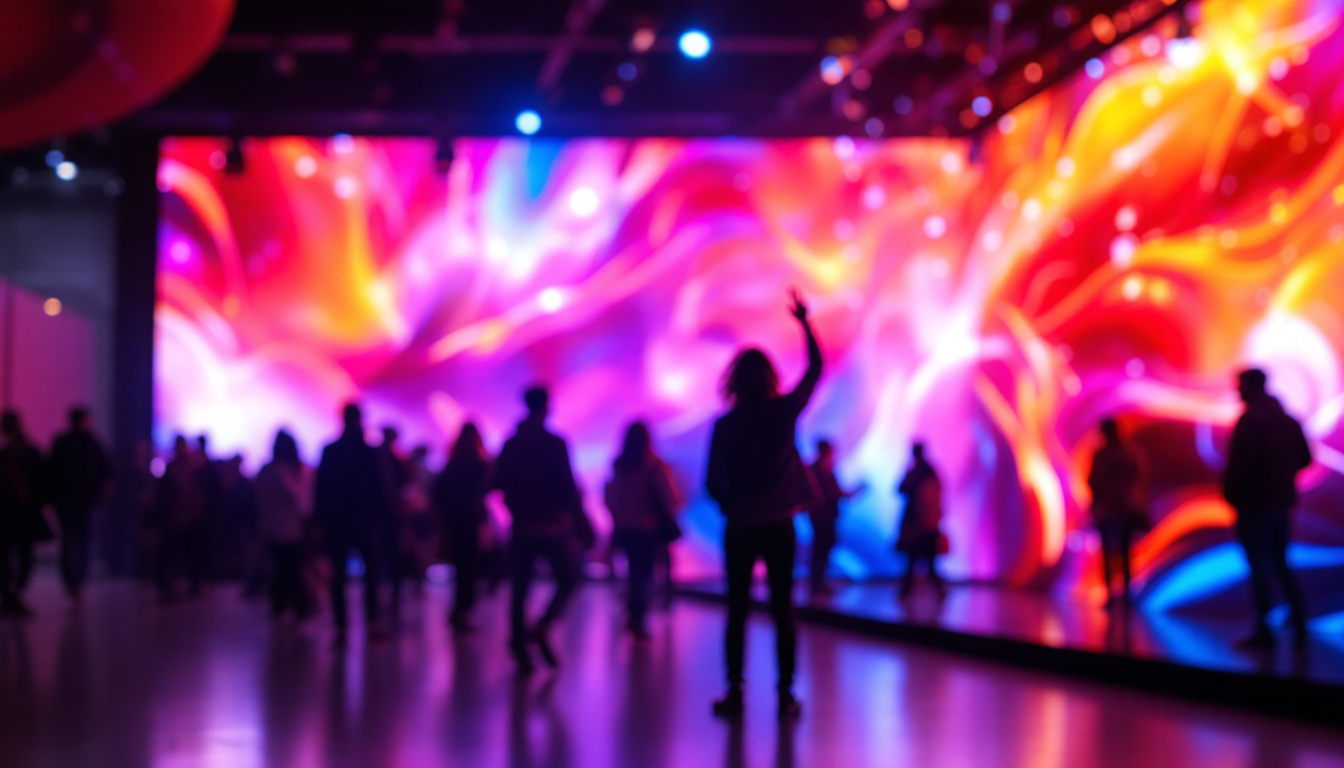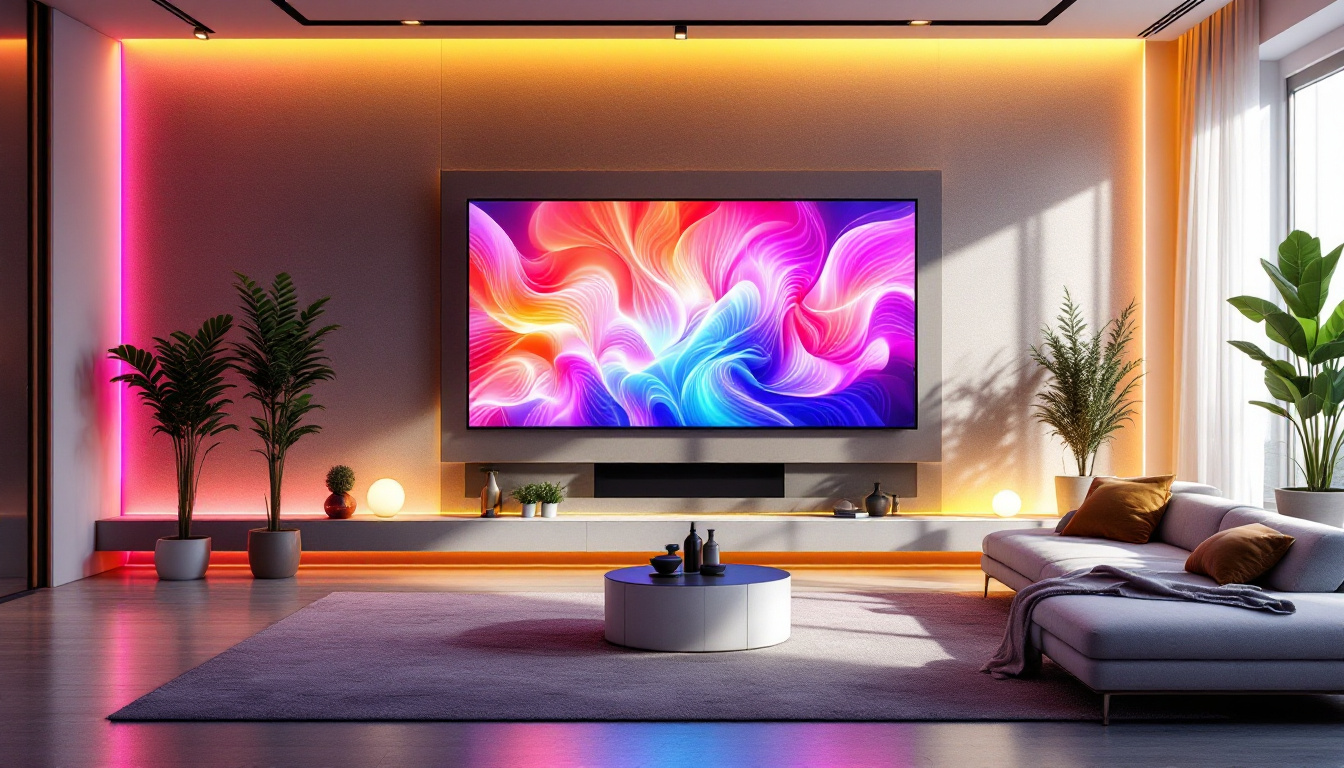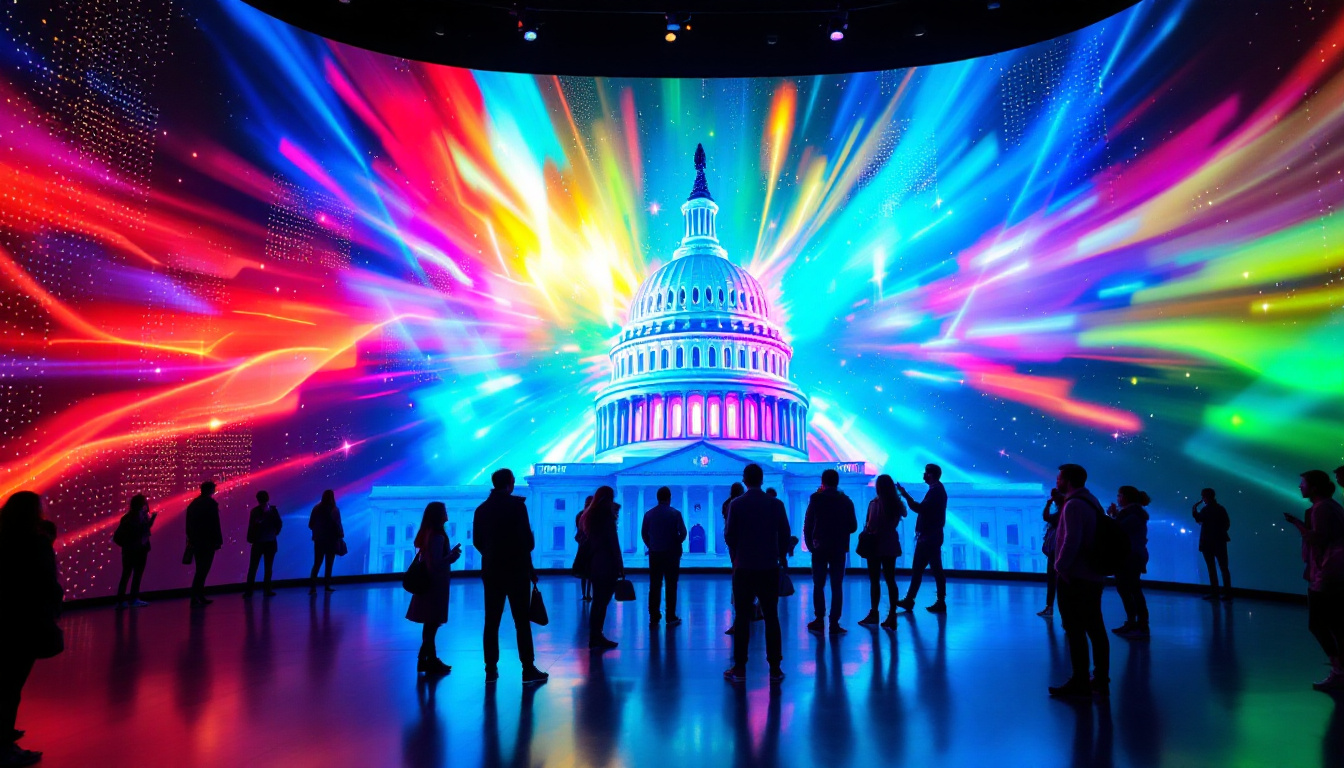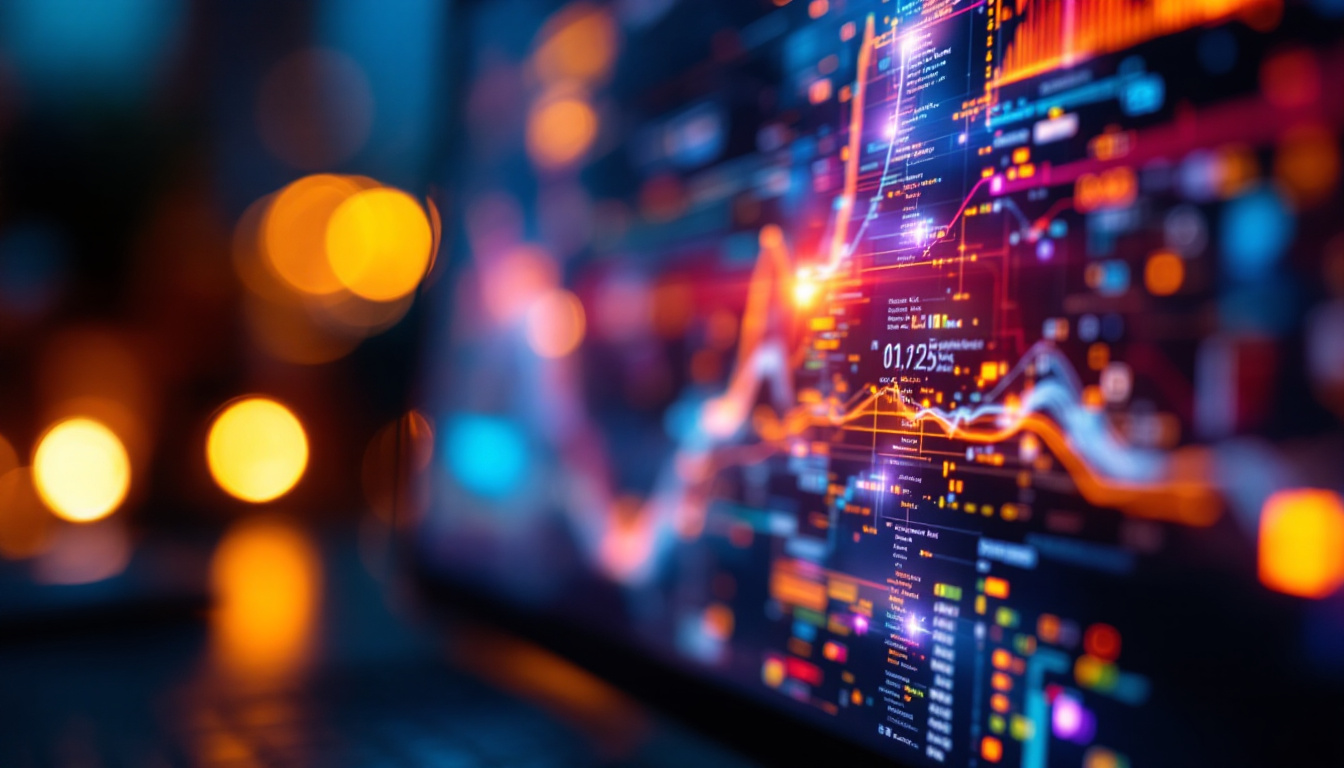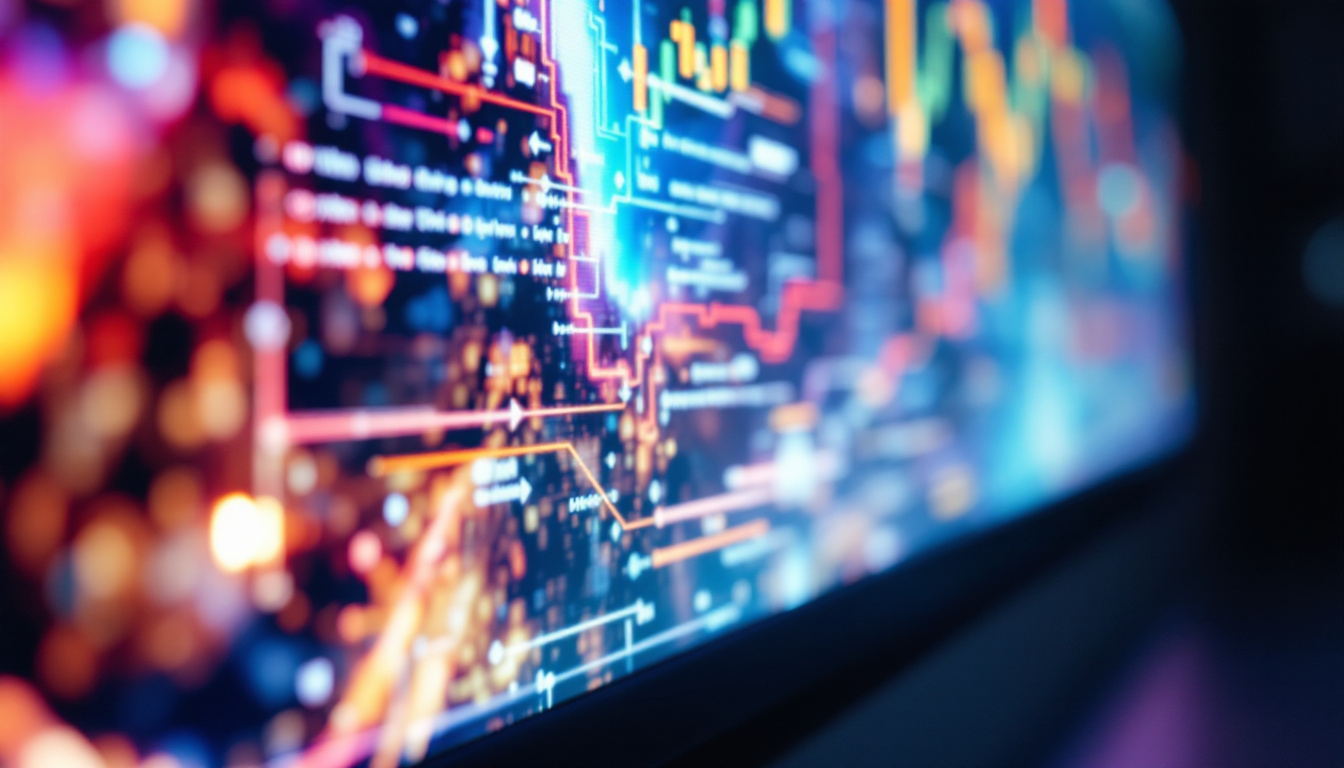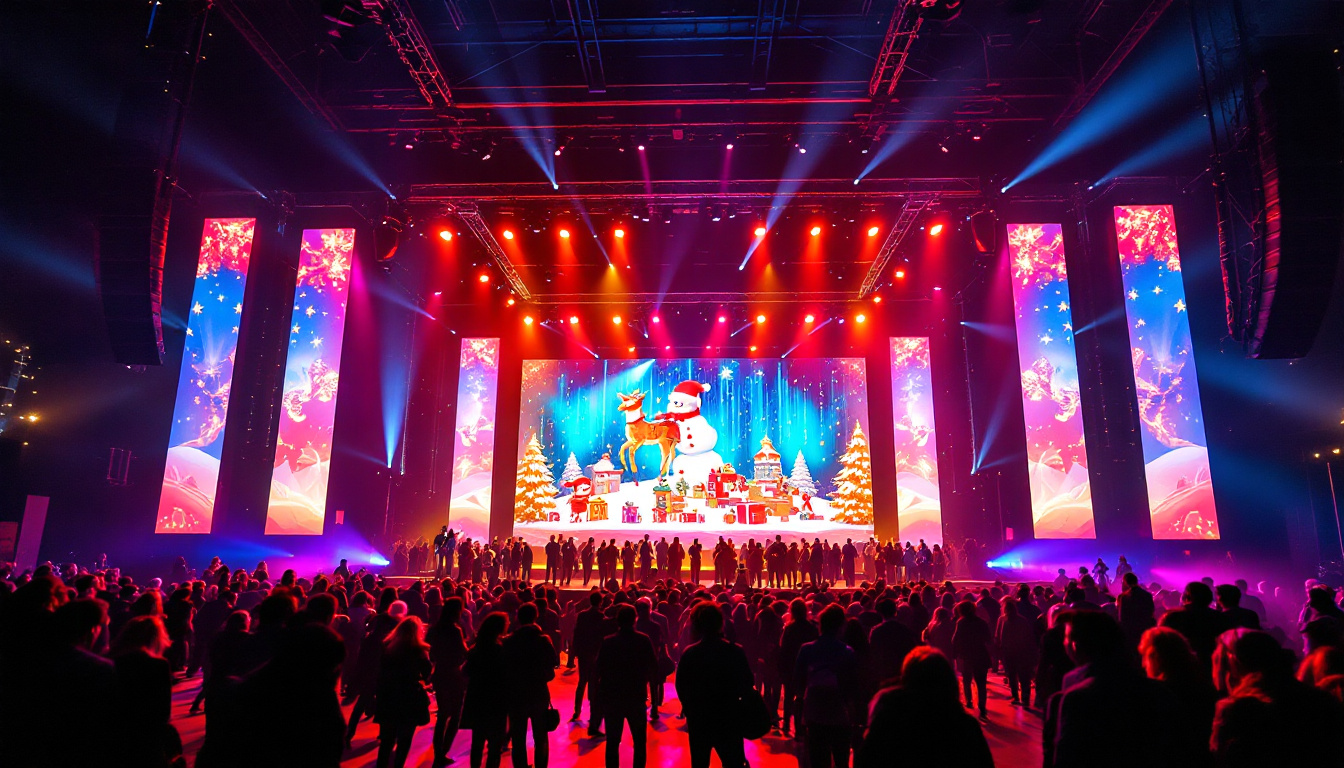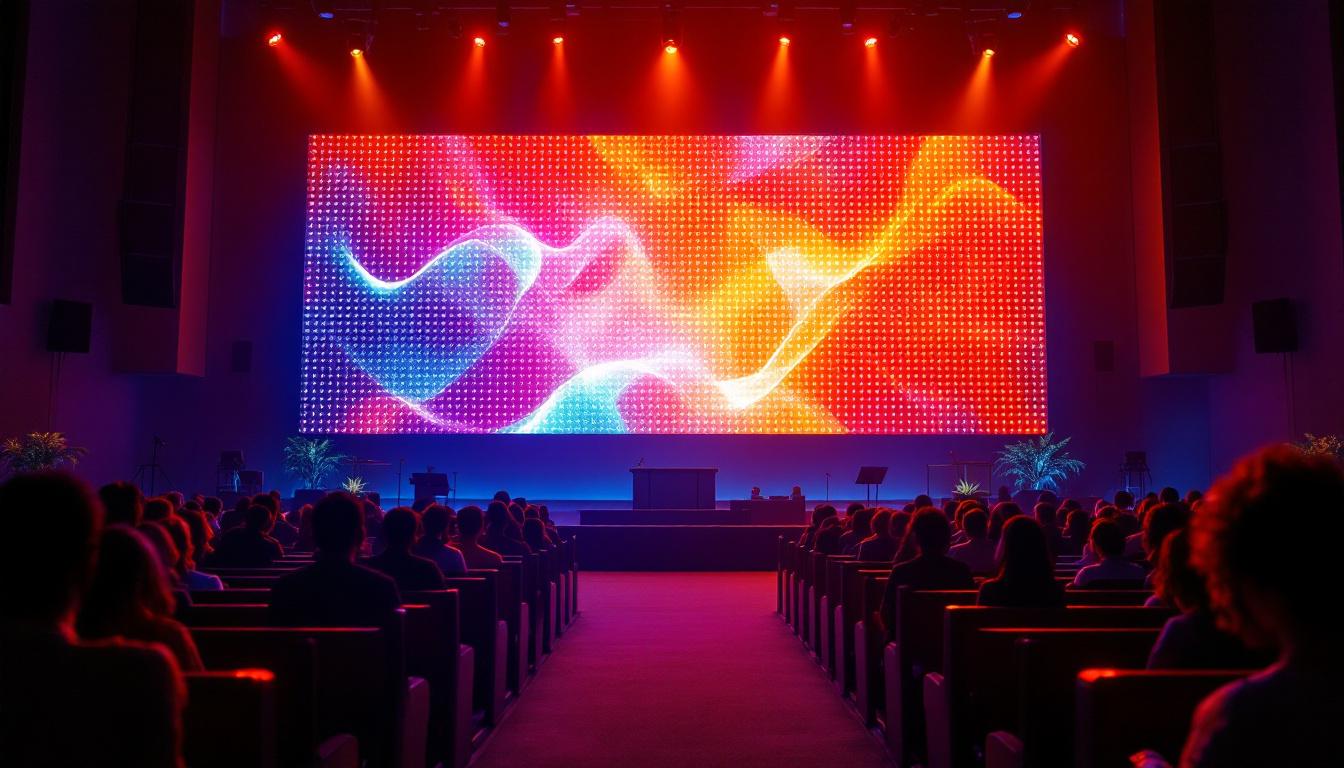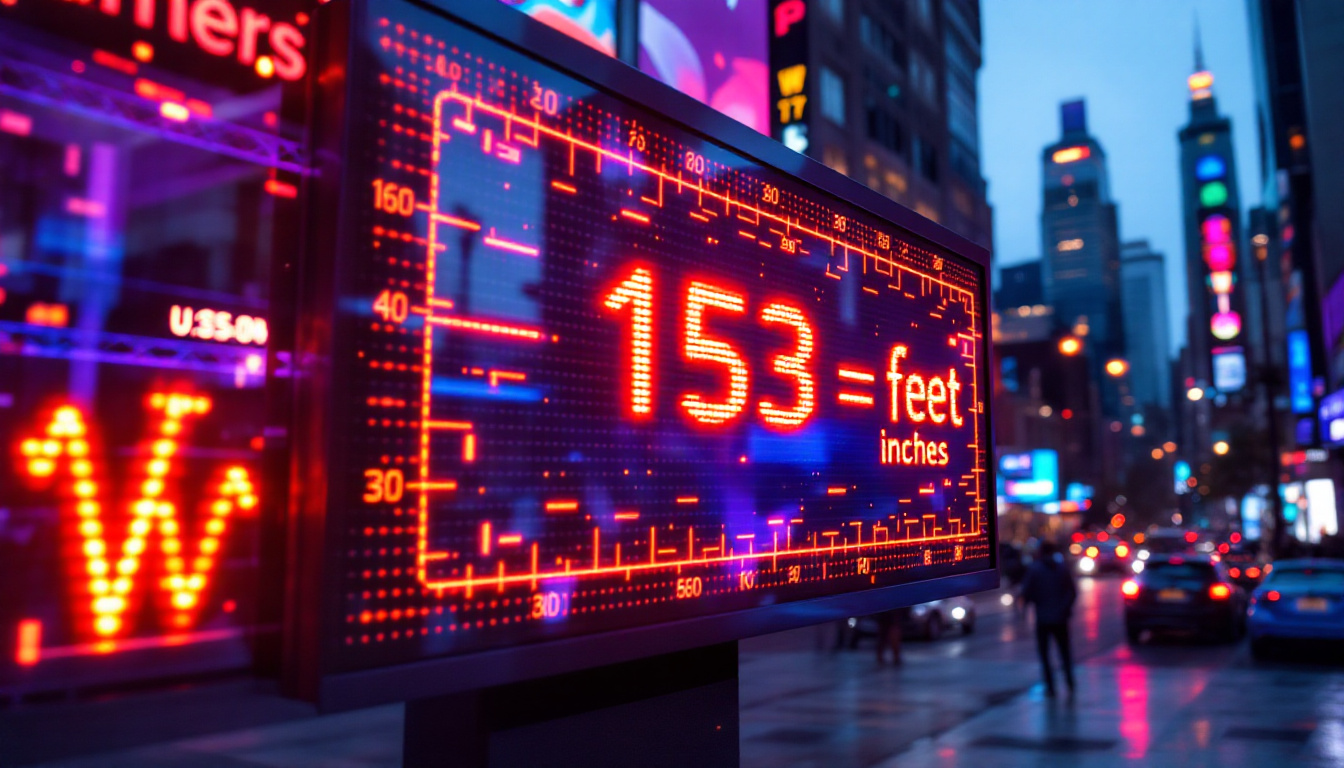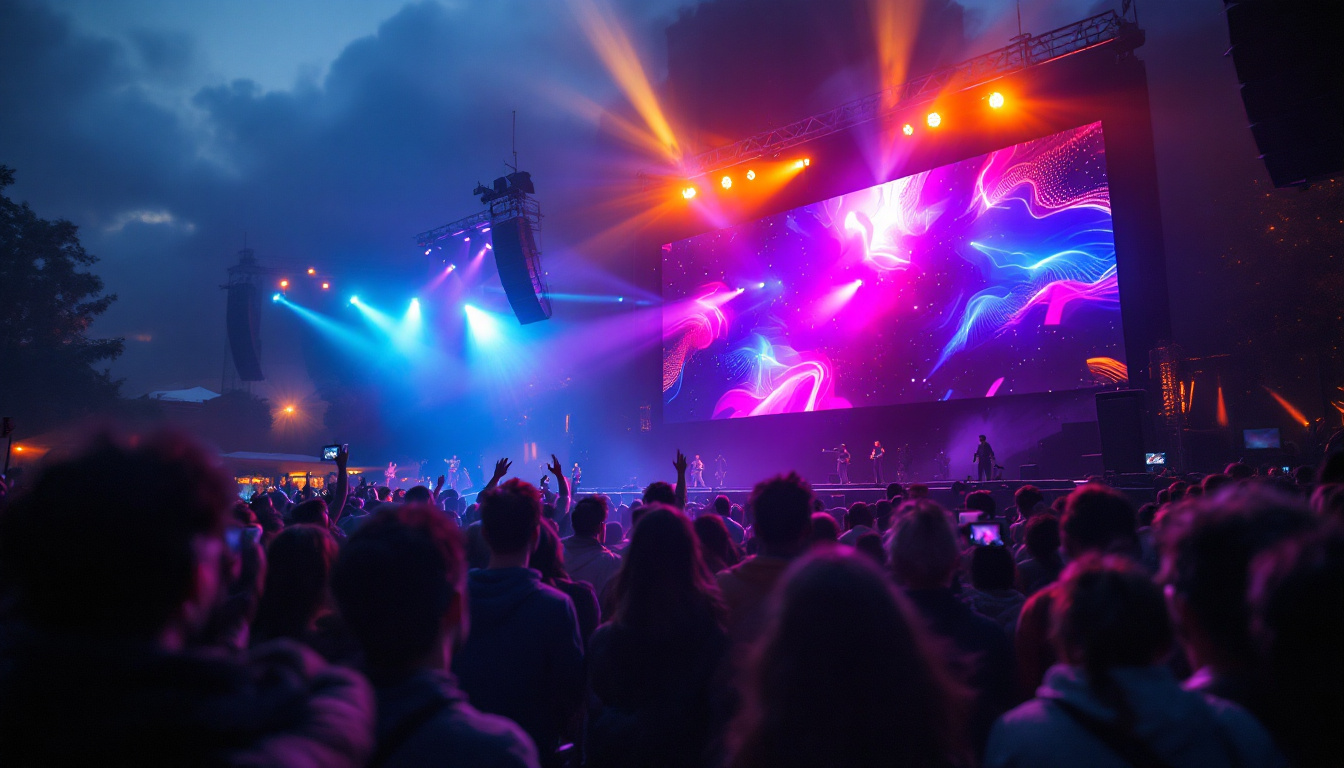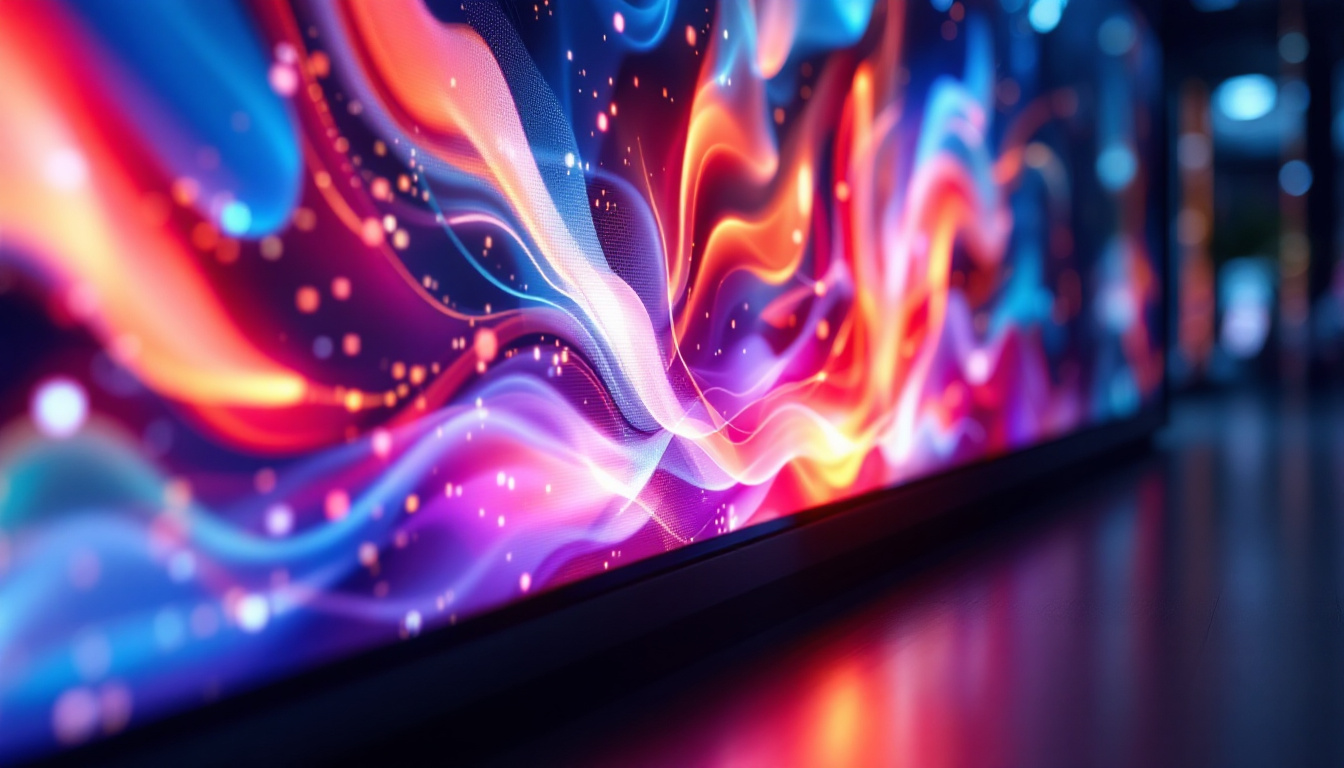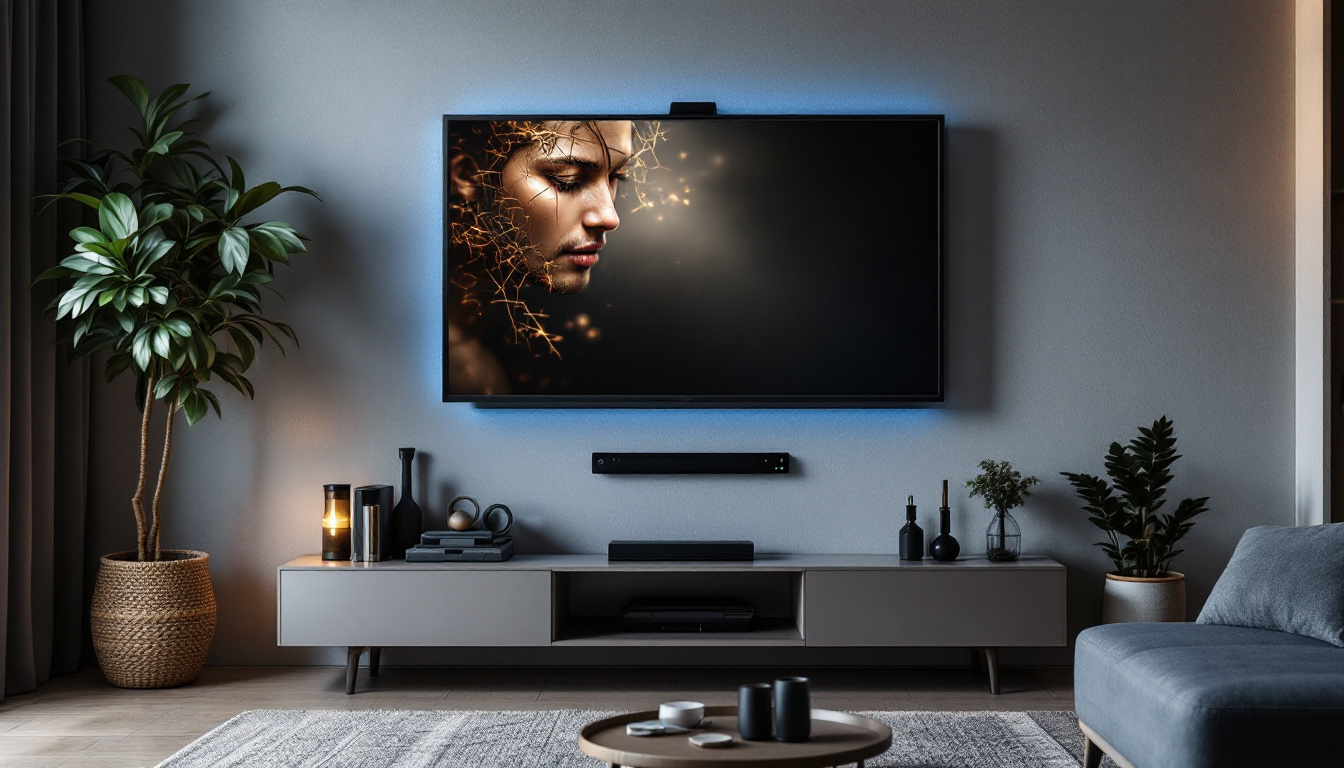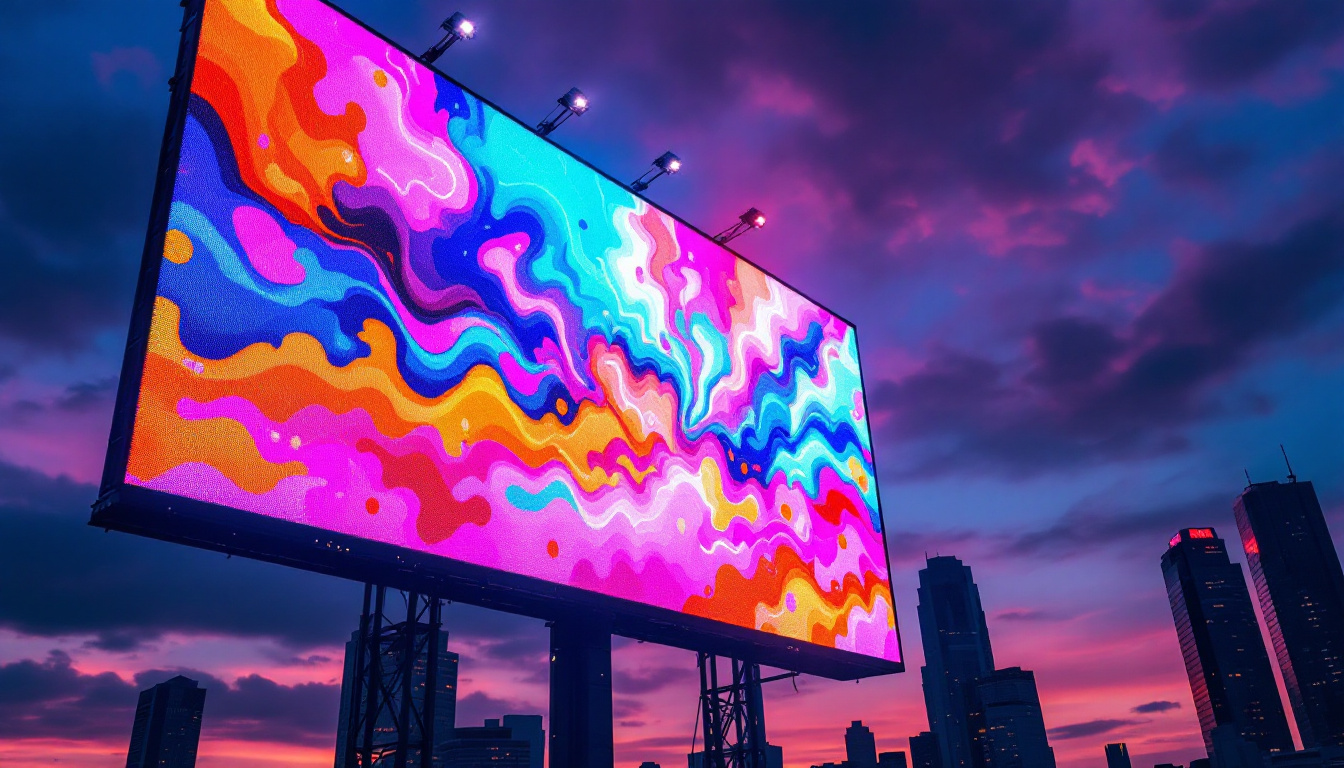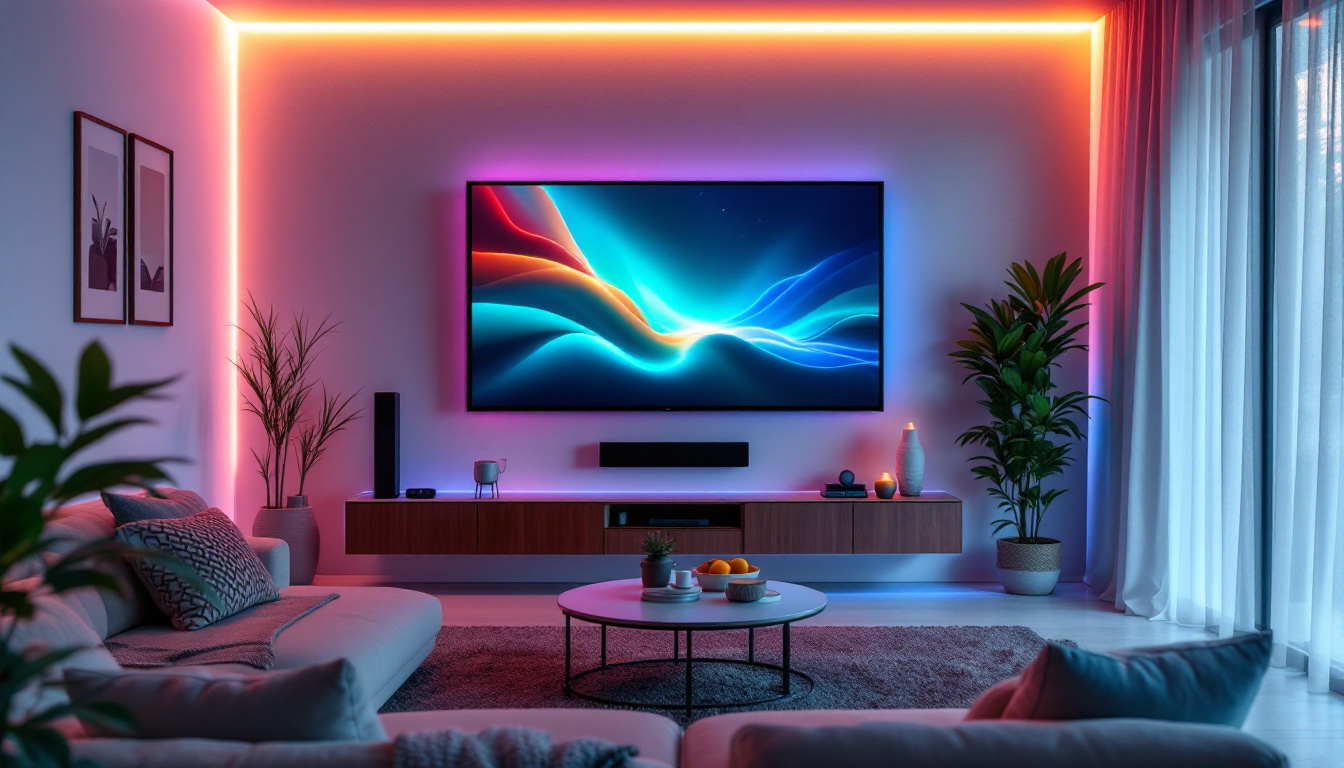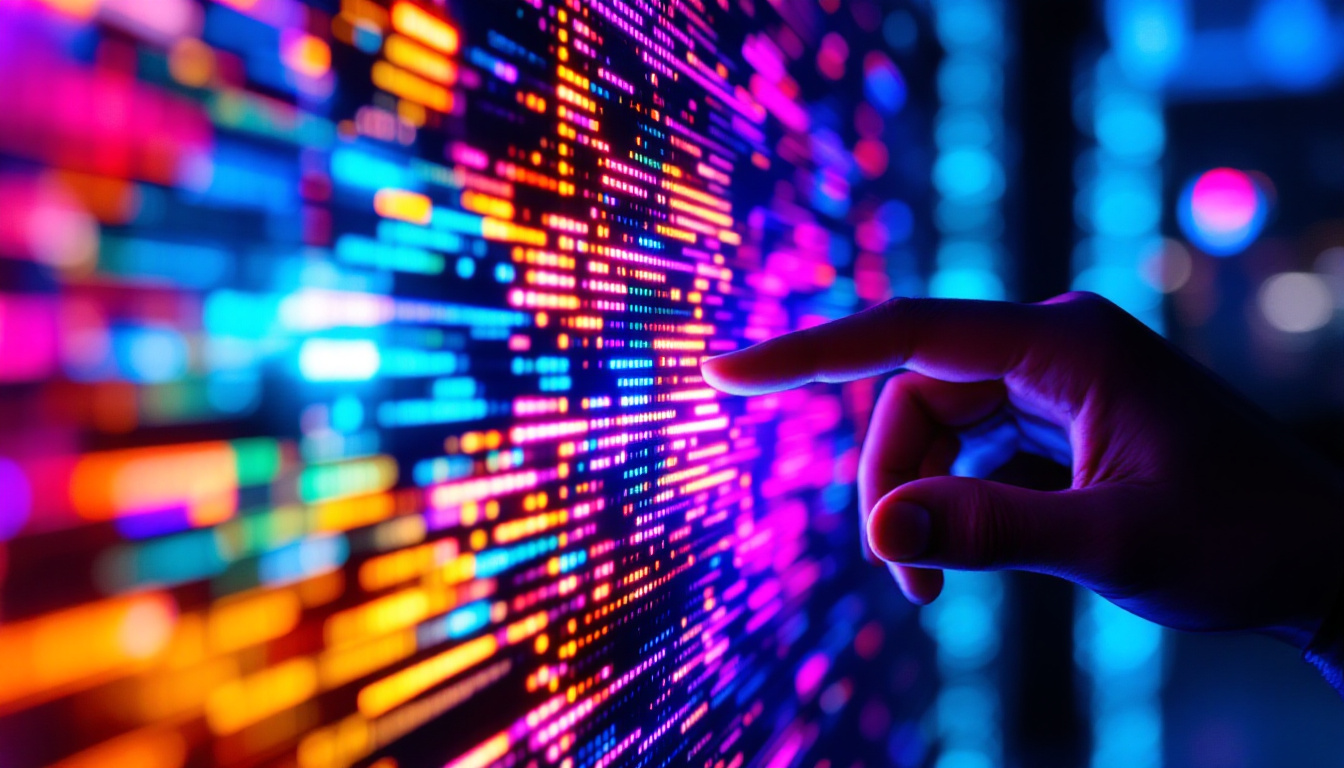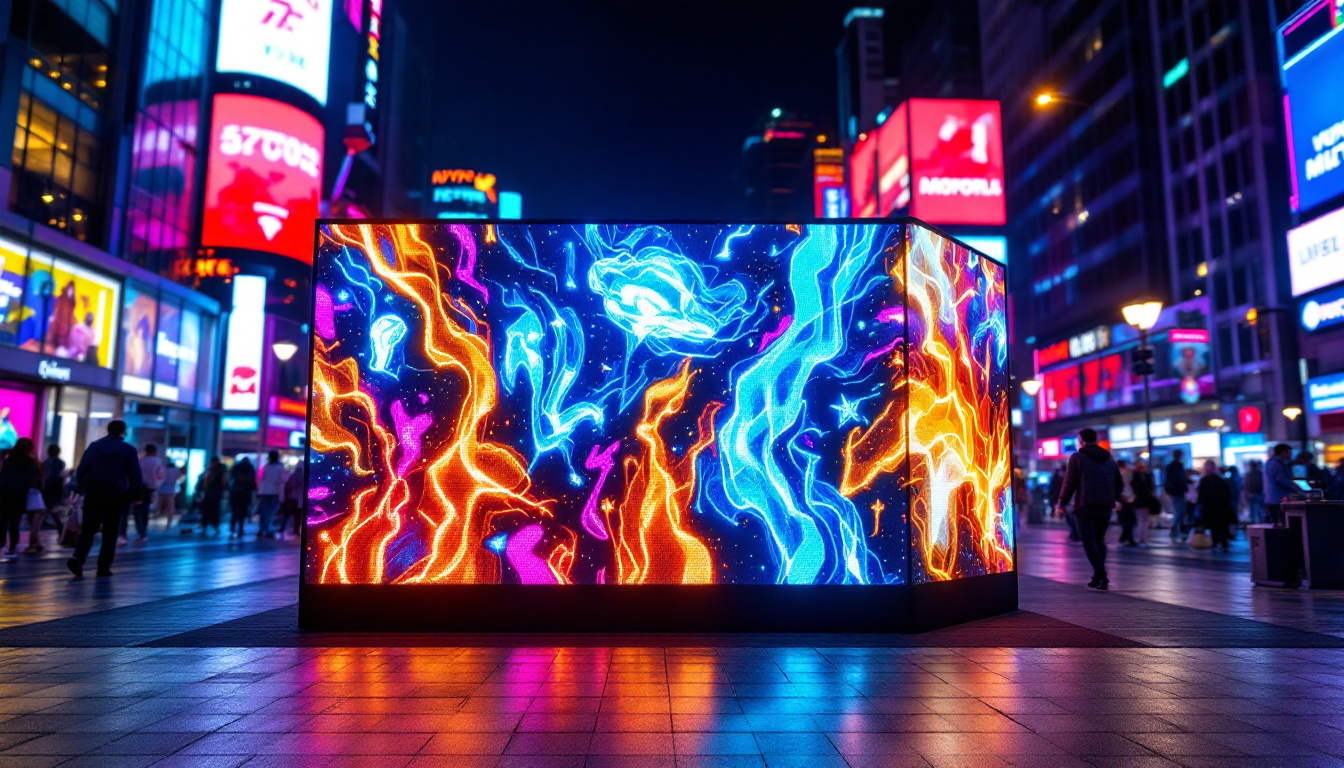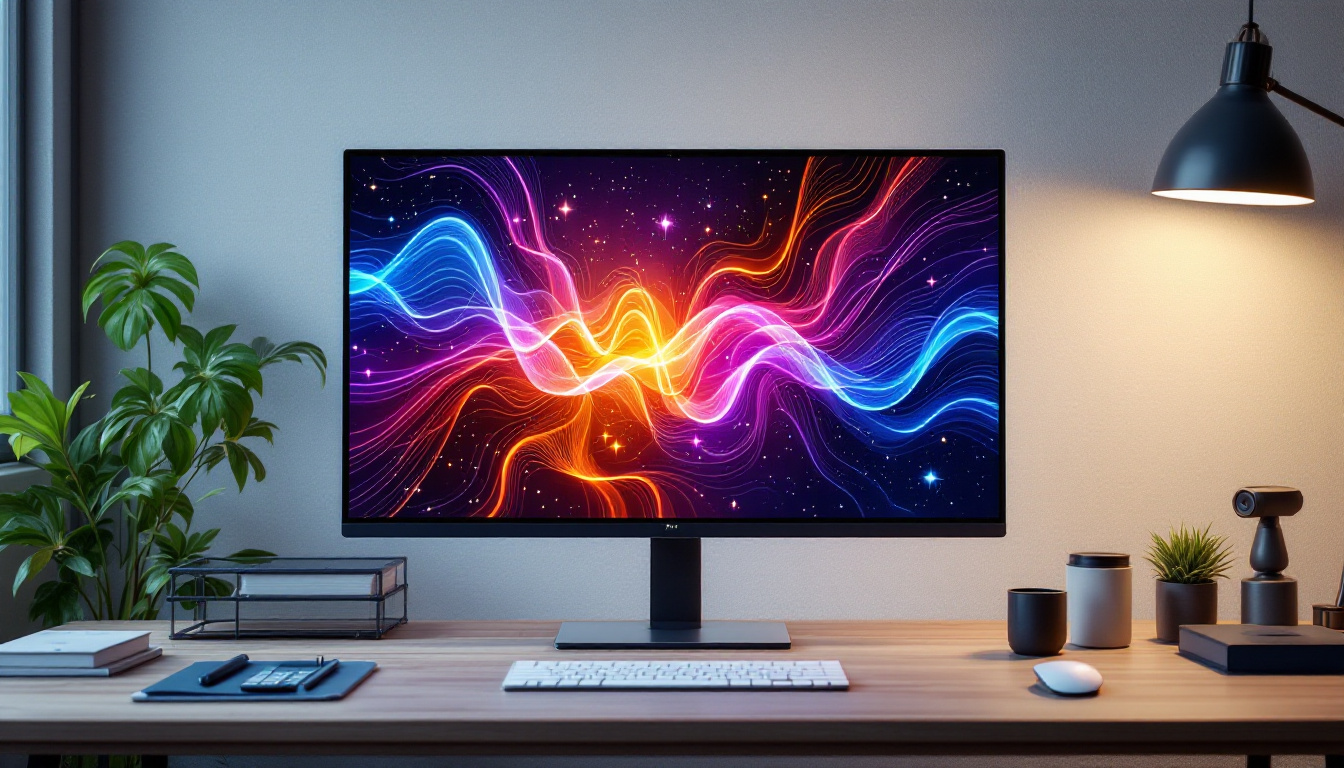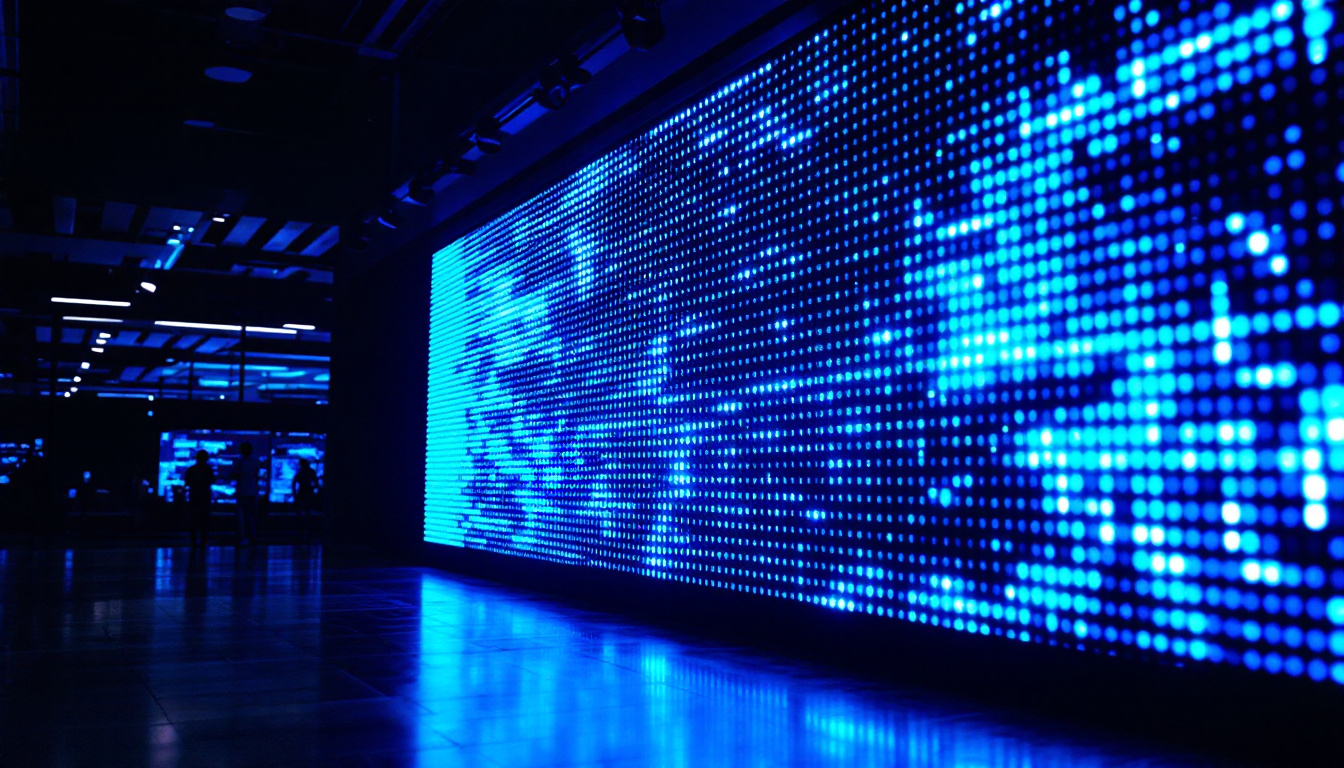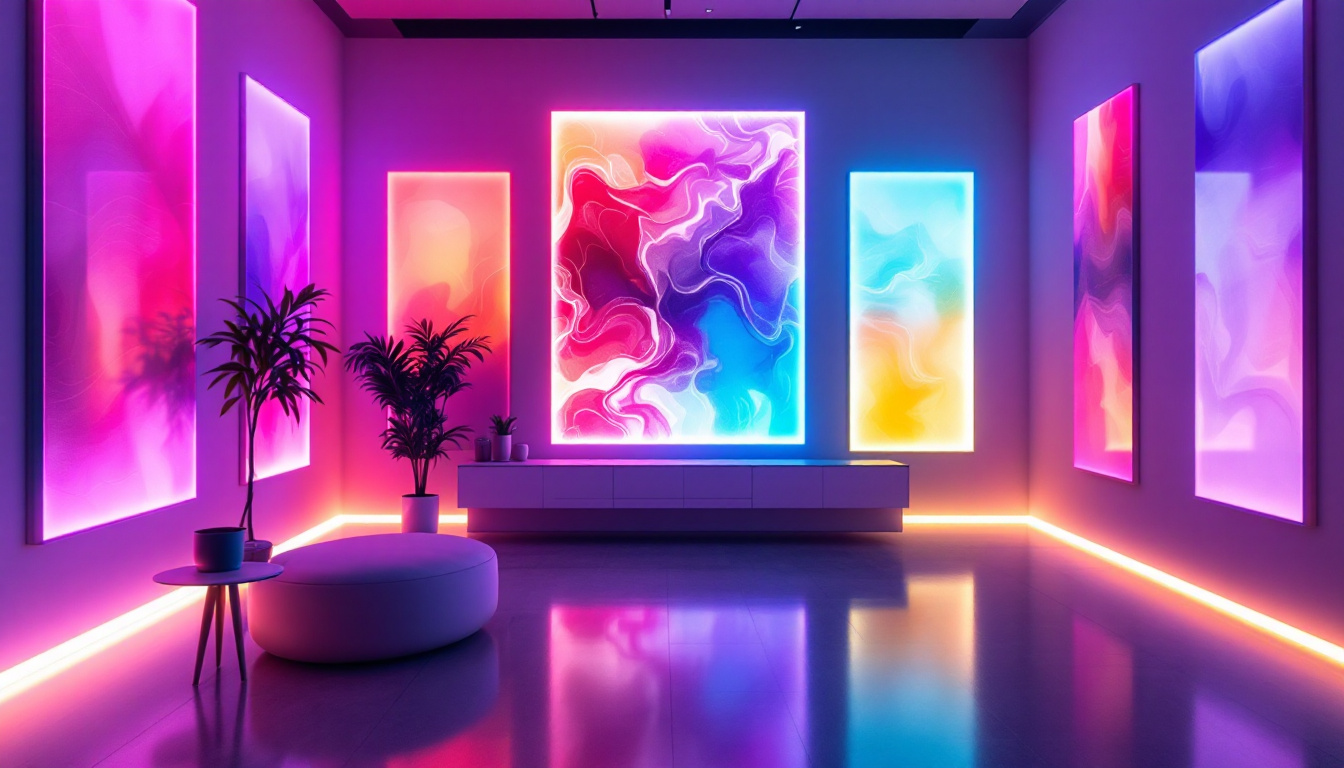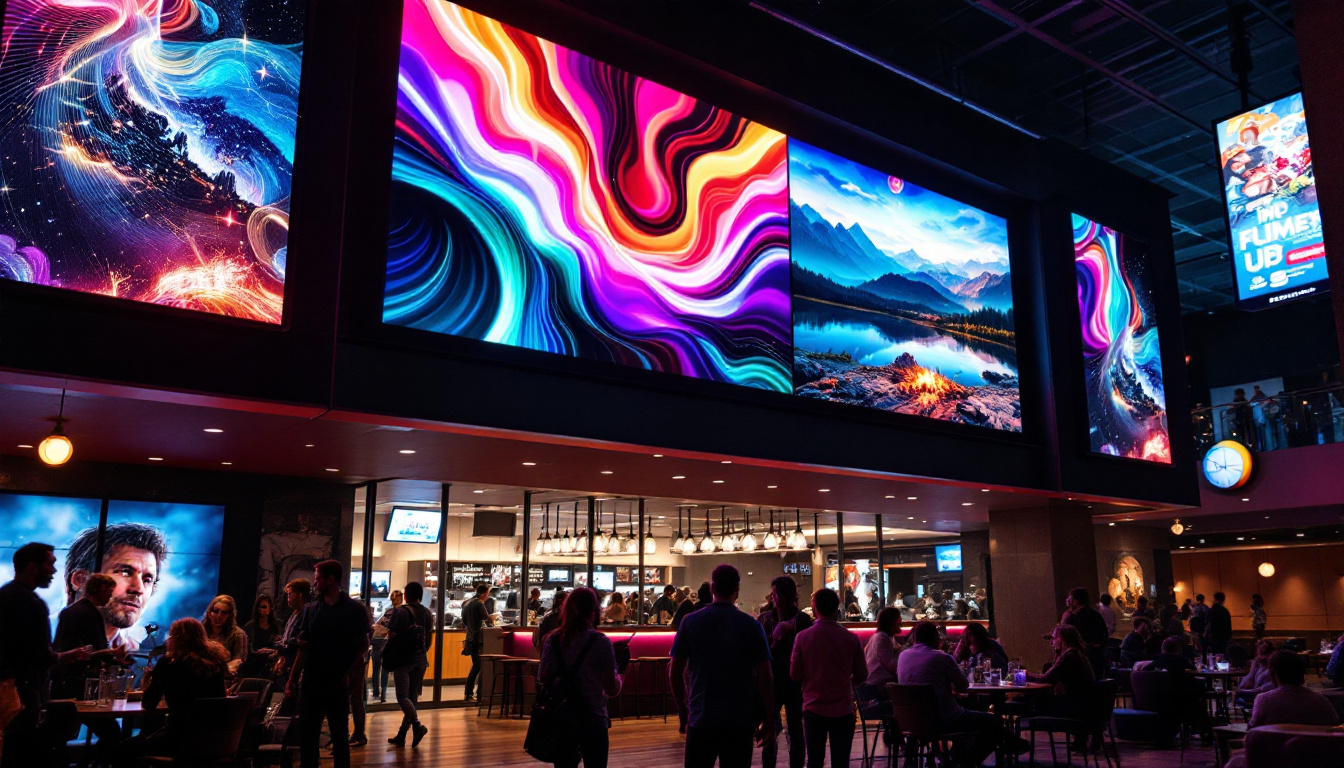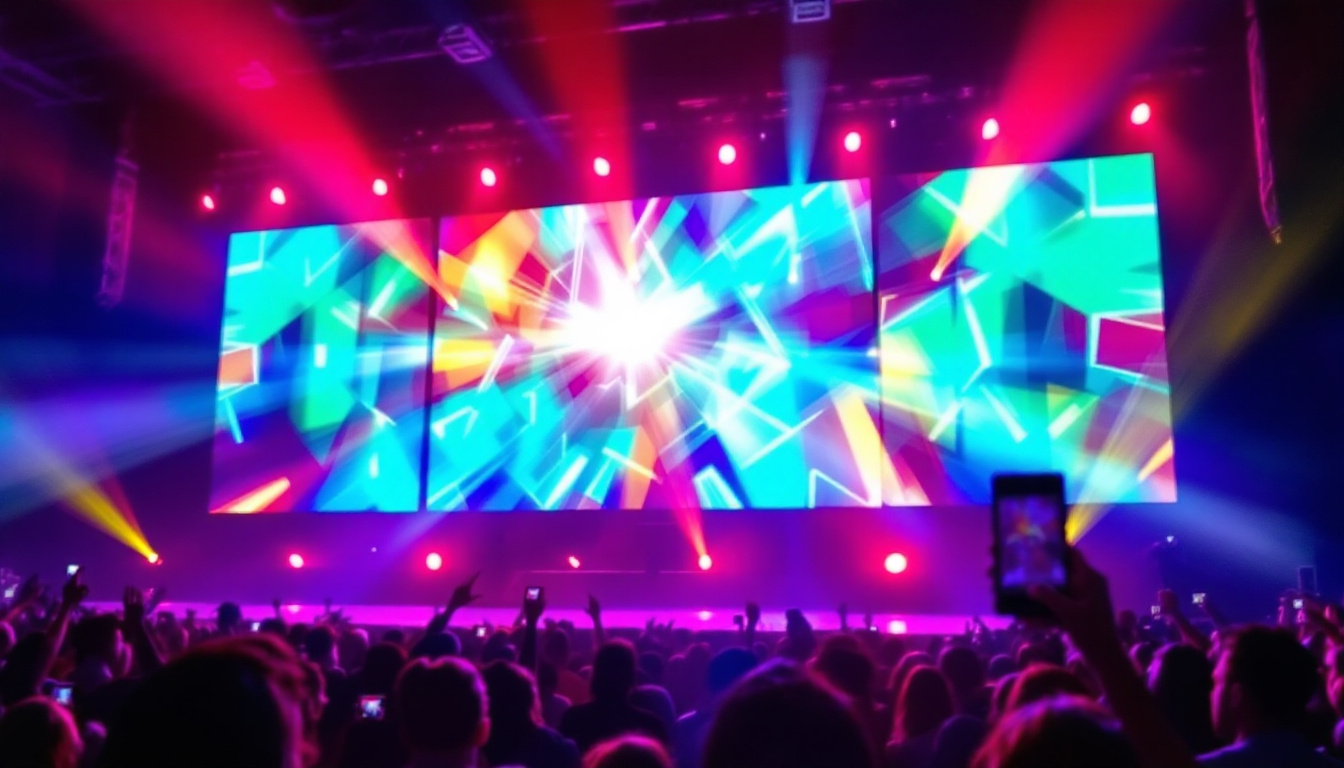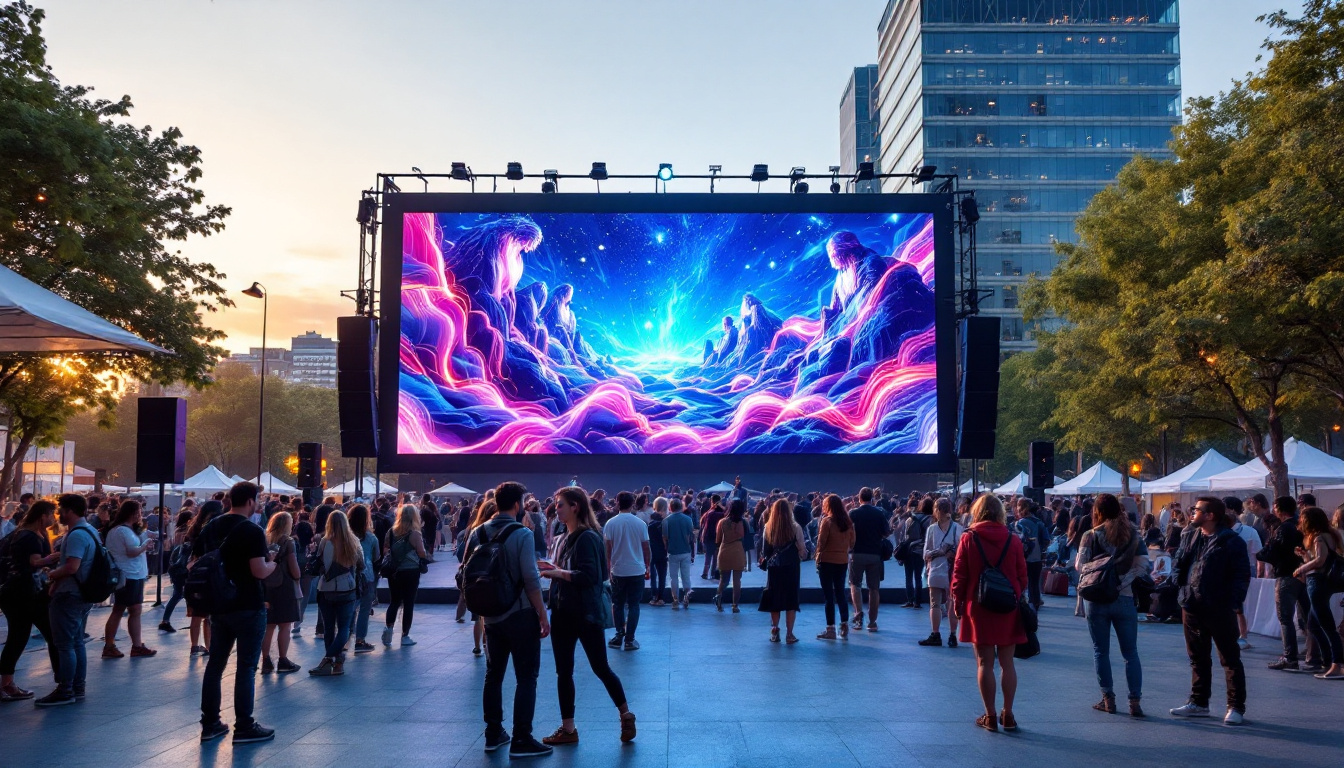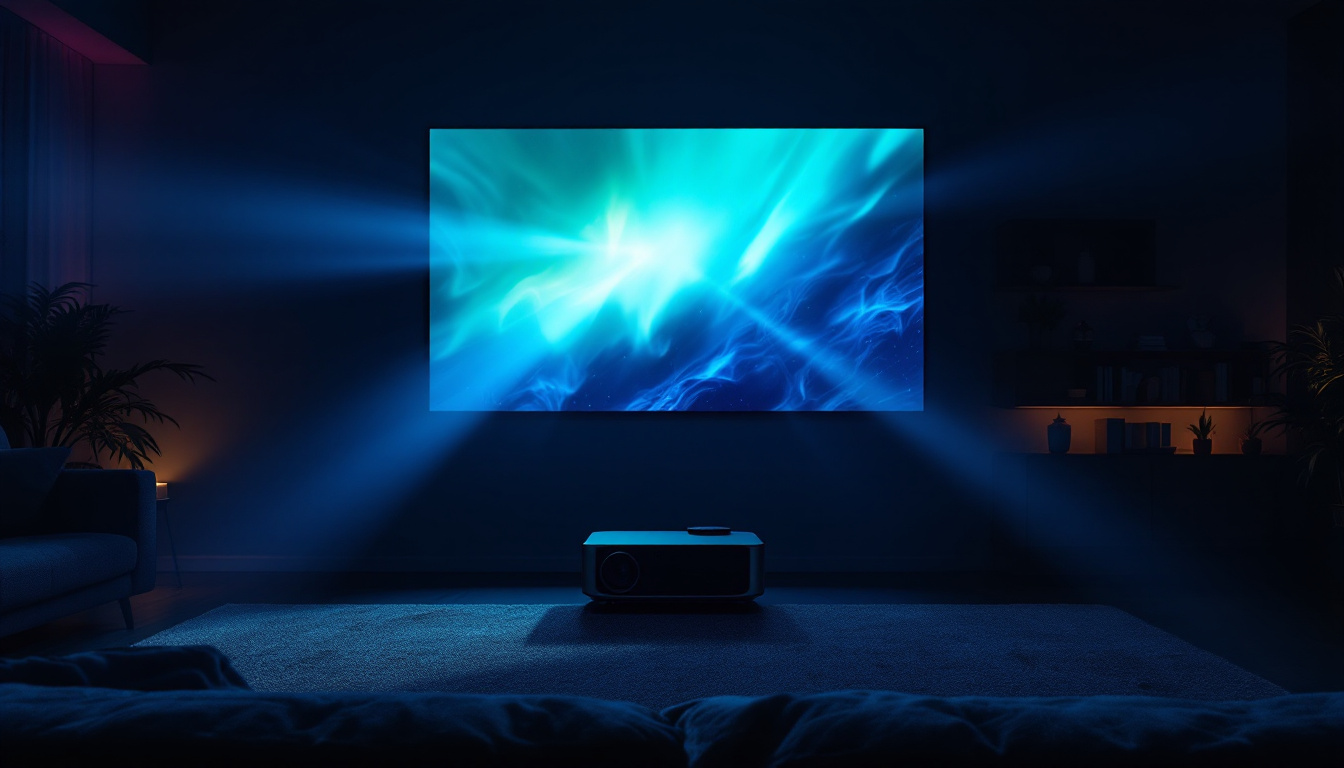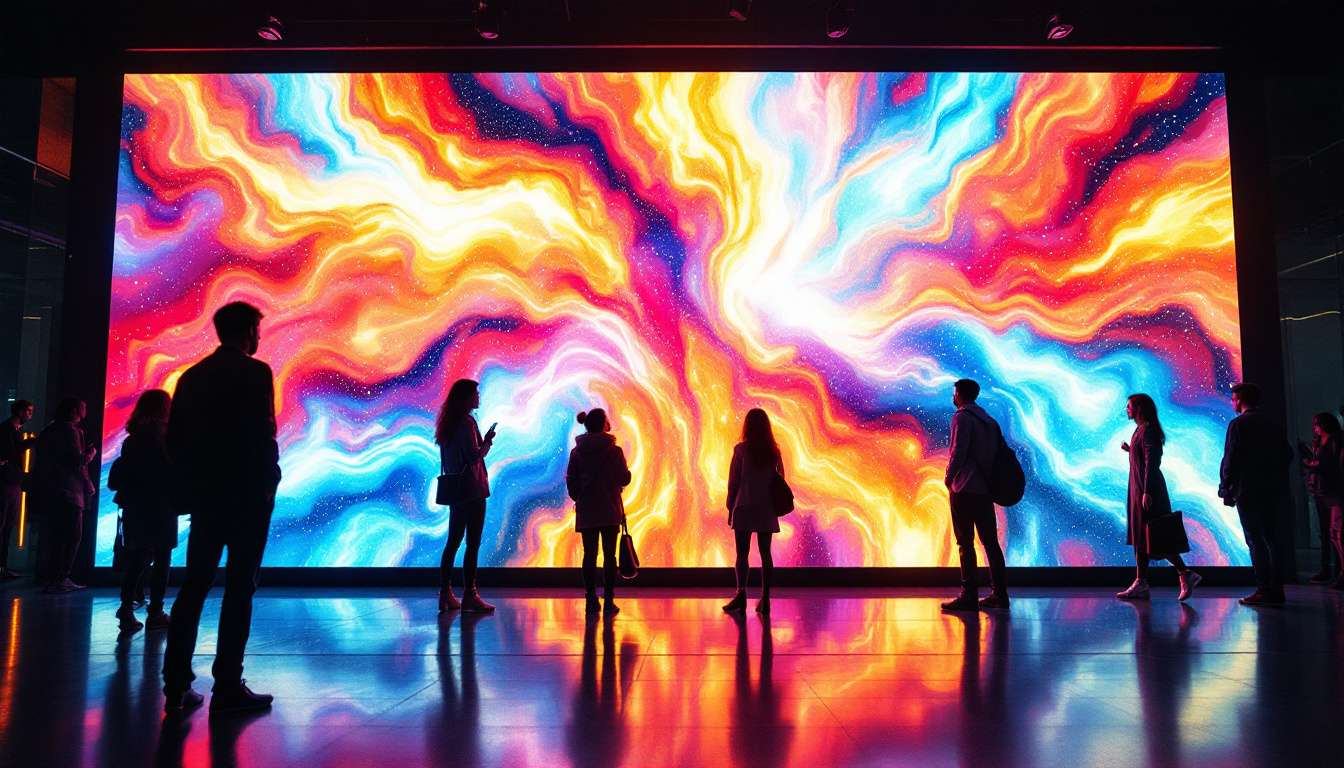In the realm of modern technology, video displays have evolved dramatically, with LED (Light Emitting Diode) displays standing out as a prominent choice for various applications. From televisions to billboards, LED technology has transformed how visual content is presented, offering superior brightness, energy efficiency, and versatility. This article delves into the intricacies of LED displays, exploring their functionality, advantages, and applications.
Understanding LED Technology
LED technology utilizes semiconductor materials to emit light when an electric current passes through them. This fundamental principle underpins the operation of LED displays, which consist of numerous tiny LED bulbs arranged in a grid. These bulbs can produce various colors by adjusting the intensity of red, green, and blue (RGB) components, allowing for vibrant and dynamic visuals. The efficiency of LEDs also contributes to their growing popularity, as they consume significantly less power compared to traditional incandescent bulbs, making them an environmentally friendly choice.
The Basics of LED Functionality
At its core, an LED display operates by controlling the brightness of individual pixels made up of RGB LEDs. By combining these colors in different intensities, a full spectrum of colors can be achieved. Each pixel is capable of displaying a wide range of colors, which is crucial for rendering detailed images and videos. The rapid response time of LEDs also means that they can display fast-moving images without blurring, making them ideal for applications such as sports broadcasting and gaming.
Moreover, the arrangement of these pixels can vary, leading to different types of LED displays. For instance, a full-color LED display will have individual RGB LEDs for each pixel, while monochrome displays may only use a single color. This versatility allows LED technology to be adapted for various uses, from simple indicators to complex video walls. Furthermore, advancements in technology have led to the development of smaller and more efficient LEDs, enabling the creation of ultra-thin displays that can be seamlessly integrated into various environments, including architectural installations and wearable devices.
Types of LED Displays
LED displays can be categorized into several types, each designed for specific applications. The most common types include:
- Direct View LED Displays: These displays consist of individual LEDs that form the entire screen, providing excellent brightness and color accuracy. They are often used in outdoor advertising due to their visibility in bright sunlight.
- LED-backlit LCD Displays: These screens use LEDs to illuminate an LCD panel, combining the advantages of both technologies for improved contrast and energy efficiency. This hybrid approach allows for thinner screens while maintaining high-quality image reproduction.
- Organic LED (OLED) Displays: Utilizing organic compounds, OLED displays offer superior color reproduction and flexibility, making them ideal for high-end televisions and smartphones. The ability of OLEDs to achieve true blacks by turning off individual pixels enhances the overall viewing experience, particularly in dark environments.
In addition to these common types, there are also specialized LED displays such as transparent LEDs, which allow for visibility through the screen while still displaying images, and flexible LED displays that can be bent or shaped to fit unique designs. These innovations are pushing the boundaries of how LED technology can be utilized in modern applications, from retail environments to art installations, showcasing the endless possibilities of this versatile lighting solution.
Advantages of LED Displays
LED displays have garnered popularity due to their numerous advantages over traditional display technologies. Understanding these benefits helps to appreciate why they are increasingly favored in various sectors.
Energy Efficiency
One of the most significant advantages of LED displays is their energy efficiency. Compared to older technologies like incandescent bulbs or traditional LCDs, LED displays consume considerably less power. This not only reduces operational costs but also minimizes environmental impact, making them a sustainable choice for consumers and businesses alike. Additionally, many LED displays come with features such as automatic brightness adjustment, which further optimizes energy consumption based on the surrounding light conditions, ensuring that energy is used only when necessary.
Brightness and Visibility
LED displays are known for their exceptional brightness levels, making them suitable for both indoor and outdoor applications. Their ability to maintain visibility in direct sunlight is particularly beneficial for outdoor advertising and large-scale displays. The high brightness levels ensure that content remains clear and engaging, regardless of ambient lighting conditions. Moreover, LED technology allows for a wider color gamut, enhancing the vibrancy of images and videos displayed. This capability is especially advantageous in sectors like retail, where eye-catching visuals can significantly influence consumer behavior and drive sales.
Longevity and Durability
LED technology is designed to last. With a lifespan that can exceed 50,000 hours, LED displays significantly outlast traditional display technologies. This longevity translates to lower maintenance costs and fewer replacements, making them a cost-effective investment over time. Furthermore, LED displays are more resistant to shock and vibration, enhancing their durability in various environments. This resilience makes them ideal for use in high-traffic areas and outdoor settings where exposure to the elements is a concern. Additionally, many modern LED displays are designed with modular components, allowing for easier repairs and upgrades, which further extends their operational life and adaptability to evolving technological standards.
Applications of LED Displays
The versatility of LED displays allows them to be used in a wide range of applications, from entertainment to information dissemination. Below are some key areas where LED displays have made a significant impact.
Advertising and Marketing
One of the most prominent uses of LED displays is in advertising. Digital billboards and signage have transformed the way brands communicate with consumers. The ability to change content dynamically allows for targeted advertising, promotions, and real-time updates, making LED displays an effective tool for marketers.
Moreover, the vibrant colors and high resolution of LED displays capture attention more effectively than static signs, leading to increased viewer engagement and brand recognition. This adaptability also allows brands to tailor their messages based on the time of day or current events, optimizing the relevance of their advertisements. For instance, a coffee shop might promote morning specials during rush hour while showcasing dessert options in the evening, ensuring that their content resonates with passersby at any given moment.
Entertainment and Events
In the entertainment industry, LED displays have become a staple for concerts, sporting events, and festivals. Large-scale LED screens enhance the audience experience by providing clear visuals, live feeds, and dynamic graphics. This technology not only improves visibility for attendees but also creates immersive environments that elevate the overall event experience. The use of LED walls allows for stunning visual effects that can synchronize with music or performances, transforming a simple concert into a multi-sensory spectacle.
Furthermore, LED displays are not limited to large venues; they are increasingly being utilized in smaller settings, such as local theaters and community events. This democratization of technology means that even grassroots productions can leverage high-quality visuals to captivate their audiences, thereby enhancing the storytelling experience and making performances more memorable.
Information and Transportation
LED displays play a crucial role in information dissemination, particularly in transportation hubs like airports and train stations. Digital signage provides real-time updates on schedules, delays, and important announcements, ensuring that travelers are well-informed. Additionally, LED displays are used in traffic management systems to convey critical information to drivers, enhancing road safety. These displays can show everything from traffic conditions to weather alerts, helping to prevent accidents and improve the flow of vehicles.
Moreover, the integration of LED technology into public transport systems has led to the development of smart city initiatives. For example, bus stops equipped with LED screens can display arrival times, service changes, and even local news, creating a more connected and informed commuter experience. This not only streamlines transportation but also fosters a sense of community by keeping residents engaged with their local environment. As cities continue to evolve, the role of LED displays in enhancing urban infrastructure and communication will only grow more significant.
Challenges and Considerations
Despite their numerous advantages, LED displays are not without challenges. Understanding these considerations is essential for making informed decisions regarding their use.
Initial Cost
The initial investment for LED display technology can be higher than that of traditional display options. While the long-term savings in energy and maintenance costs can offset this, businesses must weigh the upfront costs against their budget and expected return on investment.
Heat Generation
LED displays generate heat during operation, which can impact performance if not managed properly. Adequate cooling systems are necessary to ensure optimal functioning and longevity. This requirement can add to the overall cost and complexity of installation.
Viewing Angles
While LED displays offer excellent brightness and color reproduction, their viewing angles can sometimes be limited, particularly in certain configurations. This limitation can affect the visibility of content for viewers positioned at extreme angles, making careful placement and design considerations essential for maximizing effectiveness.
Future Trends in LED Display Technology
The landscape of LED display technology is continually evolving, with innovations paving the way for even more advanced applications. Several trends are shaping the future of this technology.
MicroLED Technology
MicroLED technology is emerging as a game-changer in the display market. By utilizing tiny micro-sized LEDs, this technology promises to deliver even higher resolutions, improved color accuracy, and enhanced energy efficiency. MicroLED displays are expected to be more flexible and scalable, making them suitable for a broader range of applications, including wearable devices and curved screens.
Integration with Augmented and Virtual Reality
As augmented reality (AR) and virtual reality (VR) technologies gain traction, LED displays are being integrated into these immersive experiences. High-resolution LED screens can enhance AR and VR applications, providing users with realistic visuals and interactive environments. This integration is poised to revolutionize gaming, training, and educational applications.
Smart LED Displays
The rise of the Internet of Things (IoT) is leading to the development of smart LED displays that can connect to the internet and other devices. These displays can be programmed to change content based on real-time data, such as weather conditions or audience demographics. This adaptability enhances the effectiveness of advertising and information dissemination, making smart LED displays a valuable asset for businesses.
Conclusion
LED displays have transformed the way visual content is presented across various sectors, offering advantages such as energy efficiency, brightness, and durability. Their versatility allows for a wide range of applications, from advertising to entertainment and information dissemination. While challenges exist, the ongoing advancements in LED technology promise a bright future, with innovations like MicroLED and smart displays set to redefine the landscape. As technology continues to evolve, LED displays will undoubtedly remain at the forefront of visual communication, shaping how audiences engage with content in the years to come.
Illuminate Your Space with LumenMatrix
As you’ve seen, LED displays are pivotal in today’s visual technology landscape, offering unparalleled energy efficiency, brightness, and versatility. If you’re looking to elevate your visual communication, LumenMatrix is your partner in innovation. Specializing in a comprehensive range of LED display solutions—from Indoor and Outdoor LED Wall Displays to dynamic Vehicle and Sports LED Displays, and even Custom and All-in-One LED solutions—LumenMatrix is committed to transforming your space with captivating displays. Experience the future of LED technology and make a lasting impression with our LED Transparent and Floor Displays. Check out LumenMatrix LED Display Solutions today and bring your vision to life with clarity and impact.

